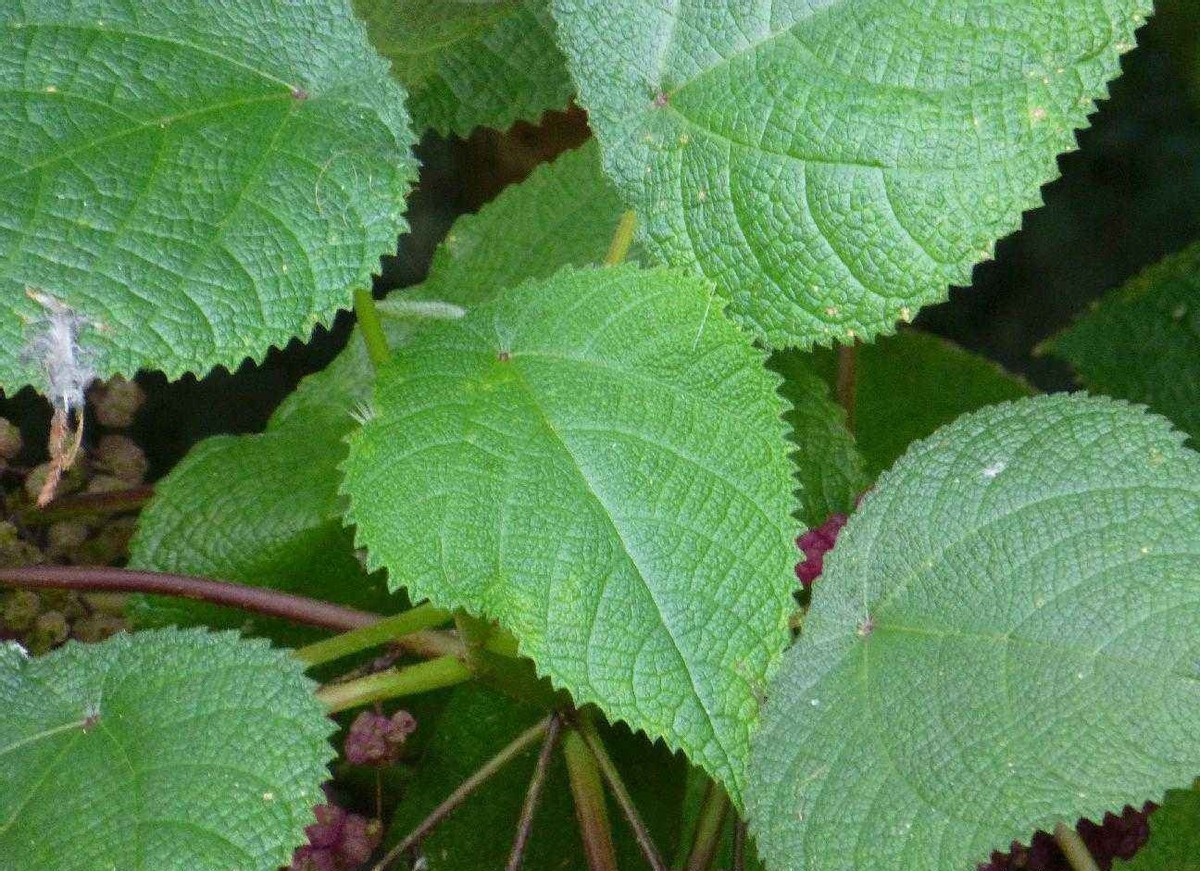This seemingly harmless, but invisible golden bark tree grows mainly in northeastern Australia, the Moluccas Islands and Southeast Asia. 1-2 m tall, the leaves are heart-shaped, the stems are straight, and the fruit is usually available in two colors, pink and purple. The golden bark tree is covered with small plush spines all over its body, and any contact with people can bring a fatal threat. The burrs that grow on the tree release toxins that create a burning pain sensation that entomologist Marilyn Hurley describes as being splashed with sulfuric acid and being electrocuted at the same time.
But just being punctured by a burr of a golden bark tree won't do much damage, so what's so painful? In 1985, T-W Christina Leung, a chemist at the University of Cambridge, and his team first discovered a pain-inducing substance, moroidin. The substance was extracted from the red hemp plant Laportea moroides, which belong to the same family as the golden bark tree. The research of other scholars has found that the golden bark tree can also extract the toxin moroidin, so some people believe that the moroidin toxin in the golden bark tree is the "culprit" of the pain.
But this is not the case, the pain caused by moroidin is not serious, and the "destructive power" of 10 micrograms of moroidin is much smaller than that of 1 microgram of golden bark leaves. Scholars conducted experiments again, and finally discovered a new toxin in 2020 - gympietides (gympietides). Gympietides cause far more pain than moroidin, but Isaac Chiu, a neurobiologist at Harvard University, is still skeptical, believing that there are far more toxins in the golden bark tree than these two, and that humans will continue to conduct research to find more new substances. Scientists' research not only focuses on golden bark trees, but also pays attention to other creatures that can make people painful, such as the same painful animal cone snail, plant arrow poison wood, etc.
